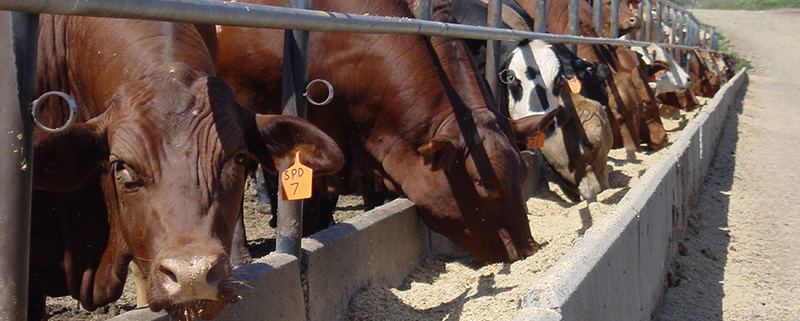

Cattle feedlot farming is the kind of beef cattle production where the farmer gets cattle that have attained slaughter size but are not in good body condition for slaughter. Animals may also be admitted to a feedlot if they are in good body condition but below the slaughter weight.
The feedlot farmer feeds the animals with specially formulated fattening and finishing diet for 30 to 120 days. Over that period, the animals attain the commonly desired slaughter weight of 400kg and are delivered to the market. Such cattle are in high demand. They fetch good prices and business profit of about 20 per cent for the farmer.
How it is done
The beef cattle requires energy, proteins, minerals, vitamins and water in specified quantities every day. The resources are for normal body maintenance, including waste removal, growth including weight gain, reproduction and movement.
Animals in a feedlot are managed in a manner that ensures they use most of their nutrient resources for body maintenance and weight gain.
That is why they are confined to limit movement; they are supplied with highly nutritious feed at the recommended 3 per cent of their body weight in dry matter and very high levels of hygiene are ensured to minimise disease.
Males and females are separated to curtail reproduction activities. A beef feedlot should preferably be located in a low annual rainfall area below 750mm to minimise the nutrient resources allocated to temperature regulation and management of diseases associated with wetness such as foot rot, pneumonia and tick-borne infections.
It is, however, good to note that not all the animals will gain weight at the same rate. Careful selection of feedlot cattle will give the farmer a fairly uniform weight gain.
For those interested on how to feed the animals, feedlot cattle are offered specially-formulated diet that ensures they have the correct and uniform level of nutrients consistently throughout their feedlot stay.
Failure to give such feed will result in disappointment. The feeding regime recommended is three times a day of feed portions, constituting 3 per cent of the animal’s body weight as dry matter.
Water is a critical ingredient in feedlot farming because it is a major nutrient for the cattle and is also used for maintaining hygiene.
A beef cow requires at least 40 litres of water per day and this may increase depending on environmental temperatures. Inadequate water intake depresses feed intake and, therefore, lowers weight gains.
There is a big difference between rearing dairy cattle bulls and finishing them for beef in a feedlot and beef feedlot farming. A feedlot farmer is not a cattle producer. Animals entering a feedlot have been produced elsewhere by a cattle producer such as a pastoralist, a dairy farmer or even a beef cattle producer. That is the reason why the animals only spend 30 to 120 days in the feedlot.
 Contact Jaguza Support
Contact Jaguza Support